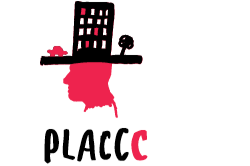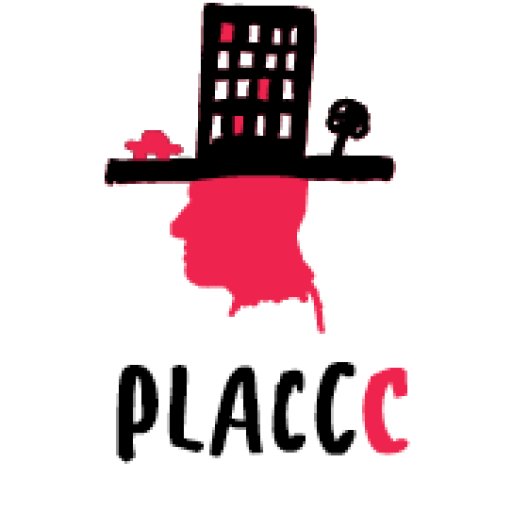How we worked on the Budapest adaptation of Collectief Walden’s production Windstilleven
Among the foreign projects in our 2021 programme, we consider the adaptation of the Dutch Collectief Walden’s Wind Still Life (originally Windstilleven) to be very important – not only because it is the fruit of years of collaboration, but also because it is actually the way we want to go on tour in the long term. Slow touring has been a buzzword in the international performing arts world for some time now, and we see it not only as a popular trend but as a really valid example, and in the field we work in, namely site- and context-specific arts, we feel it is becoming increasingly fundamental. Foreign artists come to the inviting party for a longer period of time, spend more time preparing the local presentation of the production – in addition, adaptation is often done through a collaborative creative process, involving participants from different fields, and the potential audience is addressed already during the adaptation process, not “just” served with a ready-made production in the form of a performance.
I first heard about Collectief Walden Windstilleven in 2016 from Thomas Lamers, a member of the company – here in Budapest at an international professional programme, and then saw the performance itself in 2017 on the island of Terschelling in the north of the Netherlands. What struck me about the performance was the incredible precision with which the different layers organically pile up and organise around the central theme. On the one hand, the performance uses scientific facts, literary references and the very personal stories of the performers, and on the other hand, it ‘inscribes’ this complex narrative into the landscape itself, both as ‘characters’ and as a location, and we experience it not as passive spectators but as active participants, walking through the landscape and physically experiencing it. The narrative of the landscape is thus complemented by the site-specific text and the visual world, in which we can see the landscape from a completely different perspective using a large camera obscura. The sensory, sensual and intellectual reception and experience make the experience an organic whole.
The precise complexity of the performance is due to two fundamental components: the time available for creation (practically unimaginable in the Hungarian performing arts structure), and the multidisciplinary composition of the company – by which is meant not the collaboration of different artistic disciplines, but the meeting of artistic and non-artistic fields. The company includes a philosopher who is also a dramaturg, a biologist who is also a musician, an actor who is also responsible for the design of the sets, and a graphic designer who is involved in the productions as a performer.
When we decided to invite the production to Budapest, it was clear that we did not want to show “just” a finished performance, but that we wanted to make a “deeper” adaptation of it. We were given the time to do this – on the one hand, it took us several years to raise the funds to make it happen, and on the other hand, the pandemic intervened, so we had 2 and a half years from the first site visit to the premiere to work on the local adaptation, involving various local participants.
The first, or perhaps zero, step in adaptation is always the selection of a suitable location, which (as with all highly context-specific works) means not only choosing a pleasing physical location, but also exploring the wider context of possible locations and ideally what the project can ‘give’ to the local community and context. Ambrus Ivanyos, Hungarian dramaturge and one of the founding members of Meetlab company, helped in this step back in March 2019, when he and members of Collectief Walden jointly selected the Palotasziget site on the northern part of Népsziget (People’s Island).
Afterwards, the Dutch artists gathered background knowledge about the area from urbanist, geographical and biological points of view, but also about everyday life, the beauties and difficulties of living here, through conversations with professionals and local residents (in more fortunate cases in person, in less fortunate cases online) (special thanks to Cili Lohász, Samu Szemerey and Jocó Tóth for the conversations).
In parallel, we also redesigned the central set element, originally designed for the Dutch sand dunes, which had become outdated since the premiere – we wanted to involve students in this process, and we found a committed partner in the Budapest University of Technology in the person of Péter Lassu, assistant professor, under whose guidance and with whose help the students of the Drawing and Design Department prepared 5 designs for the set in the spring semester course 2020 (although the theatrical performance originally planned for PLACCC 2020, it had to be postponed due to the pandemic situation, but the set was exhibited as an installation in September 2020).
Finally, the adaptation work was continued with the involvement of Hungarian performers, as in the Budapest adaptation the Dutch artists “only” participated as mute performers, “giving” their roles to the Hungarian performers, with whom they in turn carefully reworked and personalised the texts – and the music, which is played on a different “breathing” instrument, the accordion, instead of the saxophone of the original performance. As in the original cast, the Budapest adaptation brought together several participants from other areas of the performing arts: Pál Nyáry went from physicist to drama instructor, and Ádám Móser studied comparative literature before committing himself to music.
(Fanni Nánay)
We consider the complex and collective work on the Budapest adaptation of Windstilleven, which took several years, to be of great importance not only because of the outstanding artistic value of the resulting performance, but also because it was through this work that we began to explore the possibility of how to organise a community, rather than an audience, around the Budapest adaptation of an invited foreign theatre production with the participation of Hungarian artists, by placing the performance in a broader context. The method consists in exploiting the communicative potential of the elements of the creative process, and in working with groups of people who have been directly and indirectly involved in the Budapest adaptation of the production to reach new audiences.
Three major activities were carried out during the adaptation, which also functioned as effective communication tools by opening up the creative process to the target audience: the redesign and construction of the set of the production with students from the Budapest University of Technology, discussions and interviews with people and professionals living in the immediate vicinity of the chosen location, and a theatre workshop.
1. Collaborative set design with students of the Department of Drawing and Design at the Budapest University of Technology and Economics
BME course announcement:
http://www.rajzi.bme.hu/hu/234-hirek/571-tt-1-spring-studio-collectief-walden-placcc-festival
Feedback from one of the students of the course:
“At the beginning of the design we had to meet several strict conditions requested by the client (Collectief Walden). On the one hand, it was difficult to meet all the requirements, and on the other hand, it seemed like a real architectural design process, as we knew it could be built in the future. We first had to get to know the Collectief Walden mentality to make sure that we were not designing for them, but with them. In this frame of mind, I researched their previous projects and then tried to approach the idea as a theatre person. Once it went well, we had to start thinking about materials and details. The hardest part was figuring out how to make the folding structure easy to move, and the other was making sure the roof would stay in the position we envisioned without support from below. But the real work came in the carpenter workshop, where we had to cope with all the adjustments to get to grips with the equipment used. It was a great experience to realise how much depends on the site.” (Csongor)
Press:
https://www.octogon.hu/epiteszet/szinhazi-diszlet-kollaborativ-tervezese-a-bme-n/
2. Stories of the landscape – A two-day space-specific theatre workshop for art university students
Call for the theatre workshop
– SUMMER WORKSHOP – 18-19 AUG – PEOPLE’S ISLAND
Collectief Walden (The Netherlands) will revisit their 2016-2017 production WINDSTILLEVEN with us as part of the PLACCC Festival at the end of August. In addition to the performances (which you can watch on People’s Island from 26-28 August), you can now participate in a workshop for art students.
Date: 18-19 August 16:00-19:00, People’s Island
Stories of the landscape
A concept development workshop by Collectief Walden.
Our immediate environments are full of stories, drama and metaphors. A story about a long and unhappy marriage is best told near an old, poorly maintained bridge. A developing square is a great site to stage a performance about solidarity between generations. And where better to reflect on change and loss, than on a river bank? Landscapes can be a poem about who we are.
A biologist, a philosopher, a volunteer and a salesperson would hear a different story, when looking at the exact same landscape. This concept development workshop aims at creating clear and powerful images and concepts, while telling multiperspectivist stories. Within traditional black box theatre, sets are designed from scratch. With site specific theatre, you build on what’s already there. Ignoring the site would negatively impact your show. ‘Listening’ to it will greatly enhance it. How can you make great dramaturgical connections between landscape and story in your concepts, that are not too obvious but also not too obscure either?
Feedback from the theatre workshop participants
I remember it took me a relatively long time to open up to the stories told by the landscape. Even though we wore noise-protecting ear protection, it took a while to accept that we didn’t need to hear the sound of birds, the buzzing of mosquitoes, the sound of tree branches cracking under our feet, or the sound of the Danube lapping against the shore, because I didn’t have to tell another story about nature: now nature was telling us its own story. I have learned to be curious, persistent and patient. (Orsolya)
During Collectief Walden’s workshop I managed to reconnect with urban nature. I learnt to draw inspiration from my surroundings, to read and re-read impressions of the environment, to welcome the opinions of artists and participants, to look at expertise in a different way, to see how a landscape can tell a story or draw on shared knowledge and ideas. I experienced shared experimentation and ritual and got ideas on how to work with different genres of texts. (Anna)
The workshop taught me to pay attention to my surroundings, to look for their stories with real curiosity. It was a chance to leave the big city nerves behind a little and get two steps closer to what was around me. The openness of the guys and their belief that anything can be made into theatre/art was very inspiring. And the performance was a new experience as it played with the emotions, perception and spirit of the audience. (Dorka)

